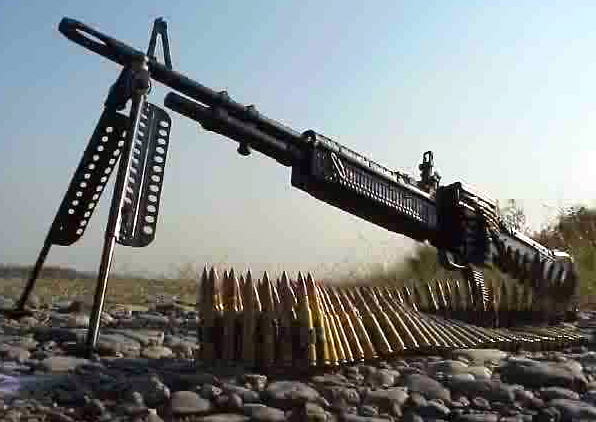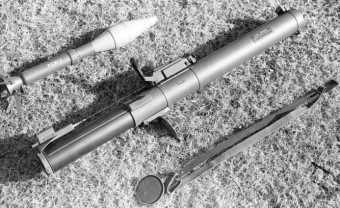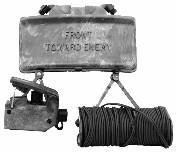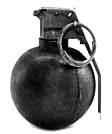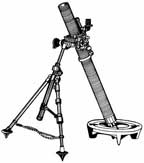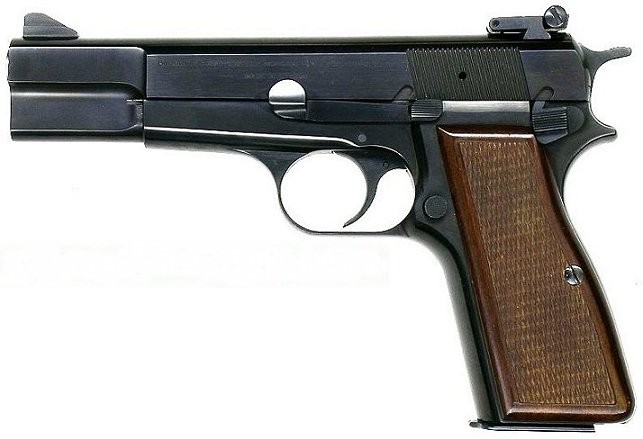AUSTRALIAN WEAPONS IN VIETNAM
SLR | F1 SMG | Owen OMC | M16 Armalite | M60 GPMG | M72 LAW | M79 Grenade Launcher
Claymore | M26 Grenade | M33 Grenade | 81 mm Mortar | 9 mm SLP
Known as the SLR (Self Loading Rifle) and is known for is straightforward fieldstripping and robust nature. The L1A1 is the British version of the Belgian FN FAL rifle. The L1A1 is a reliable, hard-hitting, gas-operated, magazine-fed semi-automatic rifle. The weapon was extensely used by the Australian Infantryman and favoured over the US M16 because of its reliability and hitting power.
|
|
Design details The F1 is a simple blowback design firing from an open bolt. It shares many design features with the British Sterling submachine gun. Unlike both the Sterling and its predecessor the Owen the F1 has a fixed wooden stock and pistol grip. A curved detachable box magazine is inserted in a magazine housing on top of the barrel. The butt-plate and pistol-grip are identical to those on the L1A1 SLR. Problems occurred with the design of the F1, as its double-stack magazine (rounds side by side in the magazine) tended to spin the rounds as the bolt connected. This eroded the chamber into a bell shape, which increased the likelihood of jams. The Australian Troops in Vietnam lost confidence with the weapon and in the 1st Australian Task Force it was replaced by the M16. The F1 continued to be used as a "garrison weapon" in the 1st Australian Logistic Support Group until the end of the war.
|
|
The Owen Gun, which was known officially as the Owen Machine Carbine, was an Australian submachine gun designed by Evelyn (Evo) Owen in 1939. The Owen was the only Australian-designed service firearm of World War II and was the main submachine gun used by the Australian Army during the war.
About two years later, Owen decided to try a direct approach to a manufacturer, John Lysaght's factory at Port Kembla near Wollongong. Owen was acquainted with the daughter of the Hotel Illawarra publican, Hilda Condon in Wollongong and that Vincent Wardell was the manager of Lysaght's. Owen knew that Wardell was in habit of visiting the hotel on Friday nights. Owen asked Condon to give his prototype to Wardell. Condon agreed and passed the prototype over the counter to Wardell in a sugar bag, suggesting that he should take look at it. Wardell became intrigued by the weapon's simplicity and arranged to have Owen transferred to the Army Inventions Board, where he re-commenced work on the gun. The army continued to view the weapon in a negative light, but the government took an increasingly favourable view. The prototype was equipped with a top-mounted drum magazine, which later gave way to a top-mounted straight magazine. The choice of caliber took some time to be settled. As large quantities of .45 cartridges were available, it was decided to adopt it for the Owen Gun. Official Production and Use
Although it was somewhat bulky, the Owen became very popular with soldiers because of its reliability. It was so successful that it was also ordered by the United States and New Zealand. The Owen was used later used by Australian troops in the Korean and Vietnam Wars. It remained a standard weapon of the Australian Army until the early 1960s, when it was replaced by the F1 submachine gun. Design The Owen has a simple blowback design, firing from an open bolt. It is easily recognisable due to its unconventional appearance, including the magazine mounted on top of the breech, and a side-mounted sight. The placement of the magazine allows cartridges to simply fall into the chamber, rather than be pushed into it by a spring, which is more prone to failure and jamming. Another unusual feature is the separate compartment inside the receiver, which isolates the small-diameter bolt from its retracting handle by means of a small bulkhead. This prevents dirt and mud from jamming the bolt, and makes the Owen a highly reliable weapon. Like the Sten, the Owen had a non-folding wire buttstock, but also had pistol grips. To facilitate cleaning, the ejector is built into the magazine, rather than the body of the gun. This allows the barrel to be removed rapidly, by pulling up a spring-loaded plunger in front of the magazine housing. After removing the barrel, the bolt and return spring are removed in a forward direction, completely dismantling the gun.
|
M60: The M60 was type classified in 1957 as a companion to the 7.62mm M14 rifle. The M60 is lighter than the .30 cal. M1919A6 and only slightly heavier than the .30 cal. M1918A2 Browning Automatic Rifle (BAR) it replaced. The M60 7.62mm machine gun has been the US Army's general purpose medium machine gun since the late 1950s. The M60 fires standard NATO 7.62mm ammunition and is used as a general support crew-served weapon. It has a removable barrel which can be easily changed to prevent overheating. The weapon has an integral, folding bipod and can also be mounted on a folding tripod. The M60 has a rate of fire of 600 rounds per minute. The M60C and M60D were aircraft versions of the basic M60 machine gun. The M60 series is today being replaced by the M240B 7.62mm medium machine gun. Click here to view the characteristics and other data relating to the M60
|
M72 (LAW): The M72 series light anti-tank weapon (LAW) is a lightweight, self-contained, anti-armor weapon consisting of a rocket packed in a launcher. It is man-portable, may be fired from either shoulder, and is issued as a round of ammunition. The tubular rocket launcher is a telescoping, smooth-bore, open-breech weapon. The outer (front) tube is made of plastic-impregnated fiberglass; the inner (rear) tube is made of aluminum. When the launcher is closed, as it is during unit maintenance, the inner (rear) tube and rocket are not visible. The disposable launcher serves as a watertight packing container for the rocket and houses a percussion-type firing mechanism that activates the rocket. The M72 was designed in the early 1960s for use against light tanks of that era. Although the M72 is mainly used as an anti-armor weapon, it may be used with limited success against secondary targets such as gun emplacements, pillboxes, buildings, or light vehicles. The M72 replaced by the M136 AT4 rocket in US service. Source: Gary's U.S. Infantry Weapons Reference Guide.
|
M79: The M79 grenade launcher resembled a large gauge, single barrel, sawed-off shotgun with the the barrel angled slightly upward. The grenade launcher was designed as a close-support weapon for the infantry. It bridged the gap in firepower between the maximum throwing distance of the hand grenade and the lowest range of supporting mortars, an area between 50 and 300 meters. The US Army added two M79s to the TO&E of the line infantry rifle squad and gave the squad an crucial indirect fire weapon. The M79 was a simple single-shot, single-barrel, shoulder-fired weapon which broke open for loading. The soldier inserted a 40mm grenade into the breech much like a shotgun. Once loaded and closed, the firer put it to his shoulder, took aim through a simple open sight, and squeezed the trigger. It fired a spherical grenade which, just 40mm in diameter, nevertheless had a kill radius of five meters. Firing a large grenade from such a lightweight weapon presented some problems, but the ammunition design was such that the whole thing became very controllable and consistent. A rubber pad was fitted to the shoulder piece of the butt stock to absorb some of the shock. The overall length of the weapon was 29 inches and its loaded weight was nearly 6.6 lbs. This small size and low weight made the M79 an ideal weapon in the close terrain of Vietnam. It had an approximate maximum range of 437 yards. Source: gruntonline.com
|
M18 (Claymore mine): The M18 Claymore, a directional fragmentation mine, is 8-1/2 inches long, 1-3/8 inches wide, 3-1/4 inches high, and weighs 3-1/2 pounds. The mine contains 700 steel spheres (10.5 grains) and 1-1/2 pound layer of composition C-4 explosive and is initiated by a No. 2 electric blasting cap. The M18 command-detonated mine may be employed with obstacles, or on the approaches, forward edges, flanks and rear edges of protective minefields as close-in protection against a dismounted Infantry attack. The M18 Claymore, a directional fragmentation mine, is 8-1/2 inches long, 1-3/8 inches wide, 3-1/4 inches high, and weighs 3-1/2 pounds. The mine contains 700 steel spheres (10.5 grains) and 1-1/2 pound layer of composition C-4 explosive and is initiated by a No. 2 electric blasting cap. The M18 command-detonated mine may be employed with obstacles or on the approaches, forward edges, flanks and rear edges of protective minefields as close-in protection against a dismounted Infantry attack. Source: Federation of American Scientists
|
M26 (Hand grenade): Now obsolete. These grenades were used to supplement small arms fire against an enemy in close combat. The M26 produced casualties through the high-velocity projection of fragments. The M26 and M26A1 fragmentation grenades have been reclassified as the M61. The M26 used M204A1 and M204A2 fuses. The delay element is a powder train requiring 4 to 5 seconds to burn to the detonator. The detonator sets off the filler. Casualty radius: 50 feet (15 meters). Source: Gary's U.S. Infantry Weapons Reference Guide. Click here to read more. |
M33 (Hand grenade): Replaced the M26 hand grenade. Also called the baseball grenade. Besides the shape, the M33 had essentially the same kill radius, delay, fuse and explosive characteristics as the M26. Because this grenade was spherical the blast pattern was more symmetrical then the M26. Source: alphaco.us webmaster |
M29 (81mm mortar): The M29A1 81mm mortar is a smooth-bore, muzzle-loaded, high angle-of-fire weapon. It consists of a cannon assembly, bipod assembly, and baseplate. The cannon assembly consists of the externally threaded barrel, mount attachment ring, and base plug with a spherical projection that contains a removable firing pin for drop firing. The bipod assembly consists of the elevating and traversing mechanism, and bipod legs. The bipod absorbs the shock of recoil in firing with a spring-type shock absorber. The M29A1 medium mortar offers a compromise between the light and heavy mortars. Its range and explosive power is greater than the M224, yet it is still light enough to be man-packed over long distances. The M29A1 weighs about 98 pounds and can be broken down into several smaller loads for easier carrying. Rounds for this mortar weigh about 15 pounds each. The M252 replaced the M29A1 in US service. Source: Gary's U.S. Infantry Weapons Reference Guide.
|
Browning 9mm Self Loading Pistol
The Browning 9mm Self Loading Pistol is the issue side arm for the Royal Air Force, RAFPC and RAF Combat Weapons Teams. The weapon is used "as issued" in competition in other words it is not allowed to be modified in any way. This is a 9mm semi-automatic pistol that is chambered for the NATO standard 9mm x 19mm pistol round. This round is also known as the 9mm luger and 9mm parabellum. Some modern literature refers to the gun as a "hi power", early literature refers to it as a "high power", this is a translation from its original title given to it by Fabrique National d'armes de guerre (FN) "grand puissance". Ammunition |
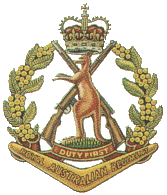

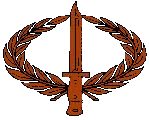
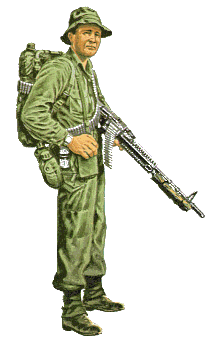

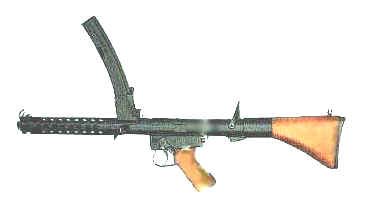
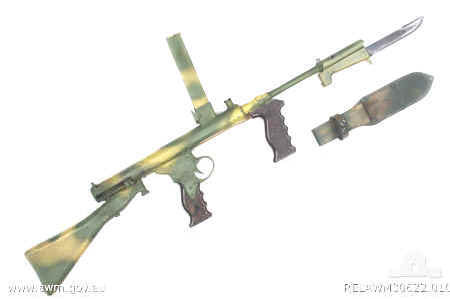
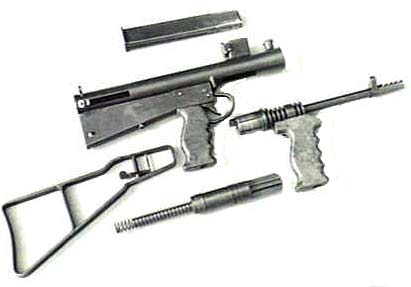 Owen, an inventor from Wollongong, was 24 in July 1939 when he demonstrated his prototype .22 calibre "Machine Carbine" to Australian Army ordnance officers at Victoria Barracks in Sydney. The gun was rejected because the army, at the time, did not recognize the value of submachine guns. Following the outbreak of war, Owen joined the army as a private.
Owen, an inventor from Wollongong, was 24 in July 1939 when he demonstrated his prototype .22 calibre "Machine Carbine" to Australian Army ordnance officers at Victoria Barracks in Sydney. The gun was rejected because the army, at the time, did not recognize the value of submachine guns. Following the outbreak of war, Owen joined the army as a private.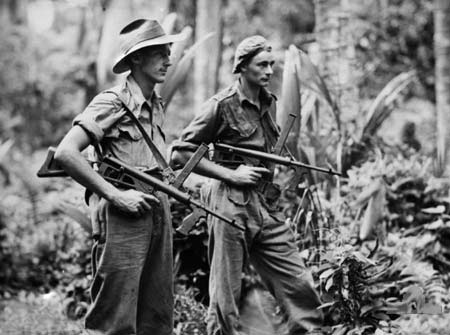 trials were organized, and Lysaght made three versions in 9 mm, .38/200 and .45. Sten and Thompson submachine guns were used as benchmarks. As part of the testing, all of the guns were immersed in mud and covered with sand to simulate the harshest environments in which they would be used. The Owen was the only gun that still operated after the treatment. Although the test showed the Owen's capability, the army could not decide on a calibre, and it was only after intervention from the higher levels of government that the army ordered the 9 mm variant.
trials were organized, and Lysaght made three versions in 9 mm, .38/200 and .45. Sten and Thompson submachine guns were used as benchmarks. As part of the testing, all of the guns were immersed in mud and covered with sand to simulate the harshest environments in which they would be used. The Owen was the only gun that still operated after the treatment. Although the test showed the Owen's capability, the army could not decide on a calibre, and it was only after intervention from the higher levels of government that the army ordered the 9 mm variant.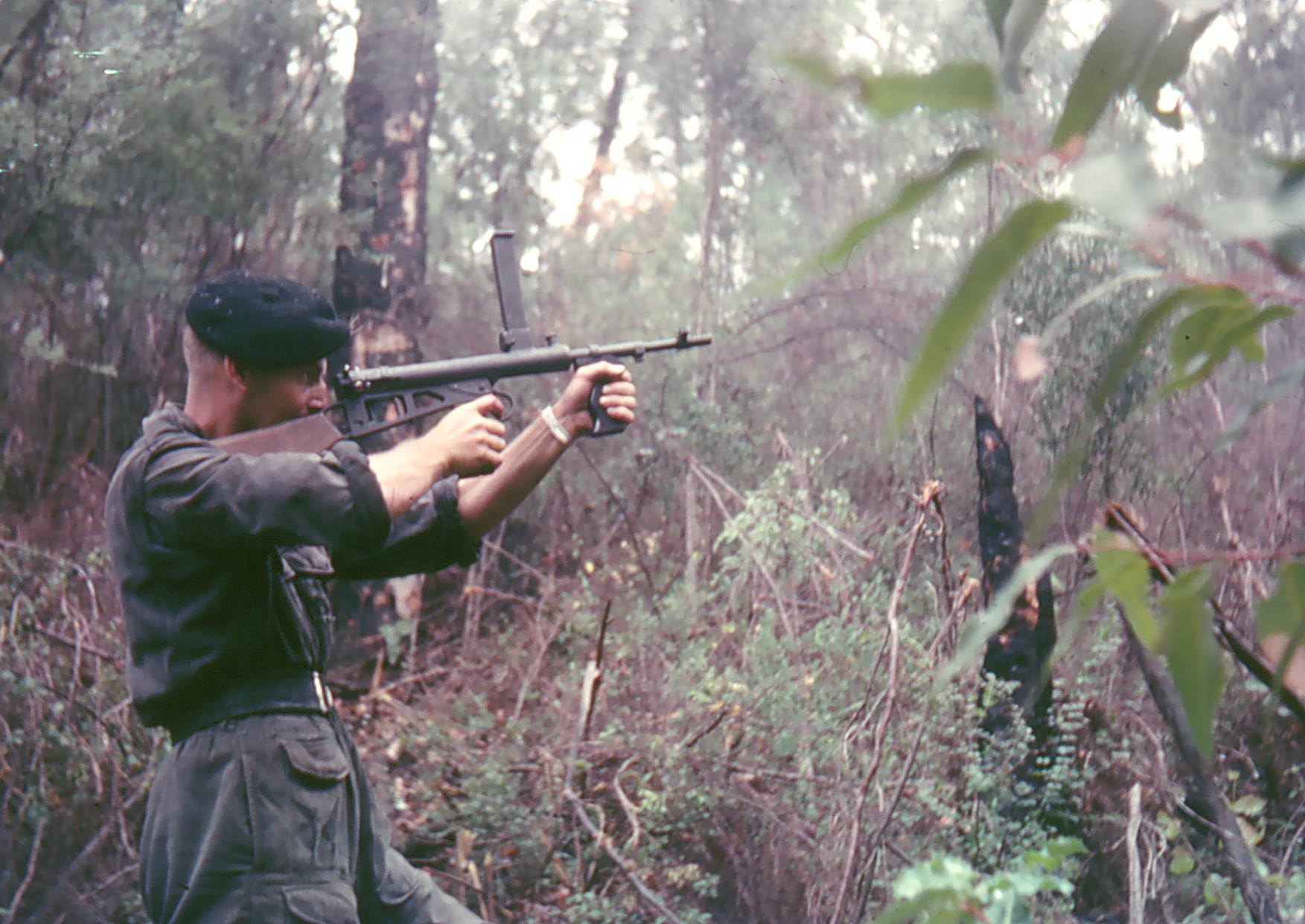 The Owen went into production at the Lysaght factory at Port Kembla. Between March 1942 and February 1943, Lysaght produced 28,000 Owen Guns. However, the initial batch of ammunition turned out to be the wrong type and 10,000 of the guns could not be supplied with ammunition. Once again government intervention overrode military bureaucracy, and took the ammunition through the final production stages, and into the hands of Australian troops at that time fighting Japanese forces in New Guinea. Approximately 50,000 Owens were produced from 1941 to 1945.
The Owen went into production at the Lysaght factory at Port Kembla. Between March 1942 and February 1943, Lysaght produced 28,000 Owen Guns. However, the initial batch of ammunition turned out to be the wrong type and 10,000 of the guns could not be supplied with ammunition. Once again government intervention overrode military bureaucracy, and took the ammunition through the final production stages, and into the hands of Australian troops at that time fighting Japanese forces in New Guinea. Approximately 50,000 Owens were produced from 1941 to 1945.

